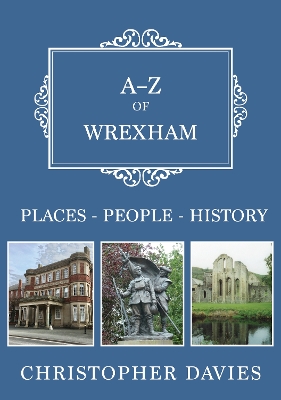A-Z
2 total works
Stamford is one of England’s finest stone towns, a happy mix of medieval and Georgian architecture that was untouched by the Industrial Revolution or later large-scale developments. In 1967, it became the country’s first conservation area and in recent years it has become a popular tourist destination for both home and overseas visitors. It has also attracted the attention of filmmakers who have been quick to see its potential as a backdrop for such TV productions as Middlemarchand Pride and Prejudice.
In this new book, local author and historian Christopher Davies takes the reader on a fascinating A–Z tour of the town’s history, through its narrow medieval streets and fascinating jumble of buildings, along the way relating many a tale of the most interesting people and places. Fully illustrated with photographs from the past and present, A–Z of Stamford will appeal to residents and visitors alike.
In this new book, local author and historian Christopher Davies takes the reader on a fascinating A–Z tour of the town’s history, through its narrow medieval streets and fascinating jumble of buildings, along the way relating many a tale of the most interesting people and places. Fully illustrated with photographs from the past and present, A–Z of Stamford will appeal to residents and visitors alike.
Situated almost on the border between England and Wales, Wrexham has a long and important history. In the past it was famous for its coal, iron, steel and lead mining and leather industries. Today, it is the largest town in North Wales and two of the Seven Wonders of Wales are located in the area: St Giles’ Church in Wrexham and Gresford church just outside the town.
In A–Z of Wrexham local author Christopher Davies explores various aspects of the town’s history, but in order to make the book as comprehensive as possible, he also focuses on the county borough. This will allow for broader comment on the effects of the Industrial Revolution in the area, and the inclusion of nationally important buildings and structures such as the eighteenth-century Erddig Hall, now cared for by the National Trust, and Pontcysyllte Aqueduct and Canal World Heritage Site.
Fully illustrated throughout, this book provides an engaging and informative guide to the rich heritage of this part of North Wales. Readers will gain a fascinating insight into Wrexham’s buildings, industry and the individuals who shaped the area across the centuries.
In A–Z of Wrexham local author Christopher Davies explores various aspects of the town’s history, but in order to make the book as comprehensive as possible, he also focuses on the county borough. This will allow for broader comment on the effects of the Industrial Revolution in the area, and the inclusion of nationally important buildings and structures such as the eighteenth-century Erddig Hall, now cared for by the National Trust, and Pontcysyllte Aqueduct and Canal World Heritage Site.
Fully illustrated throughout, this book provides an engaging and informative guide to the rich heritage of this part of North Wales. Readers will gain a fascinating insight into Wrexham’s buildings, industry and the individuals who shaped the area across the centuries.

